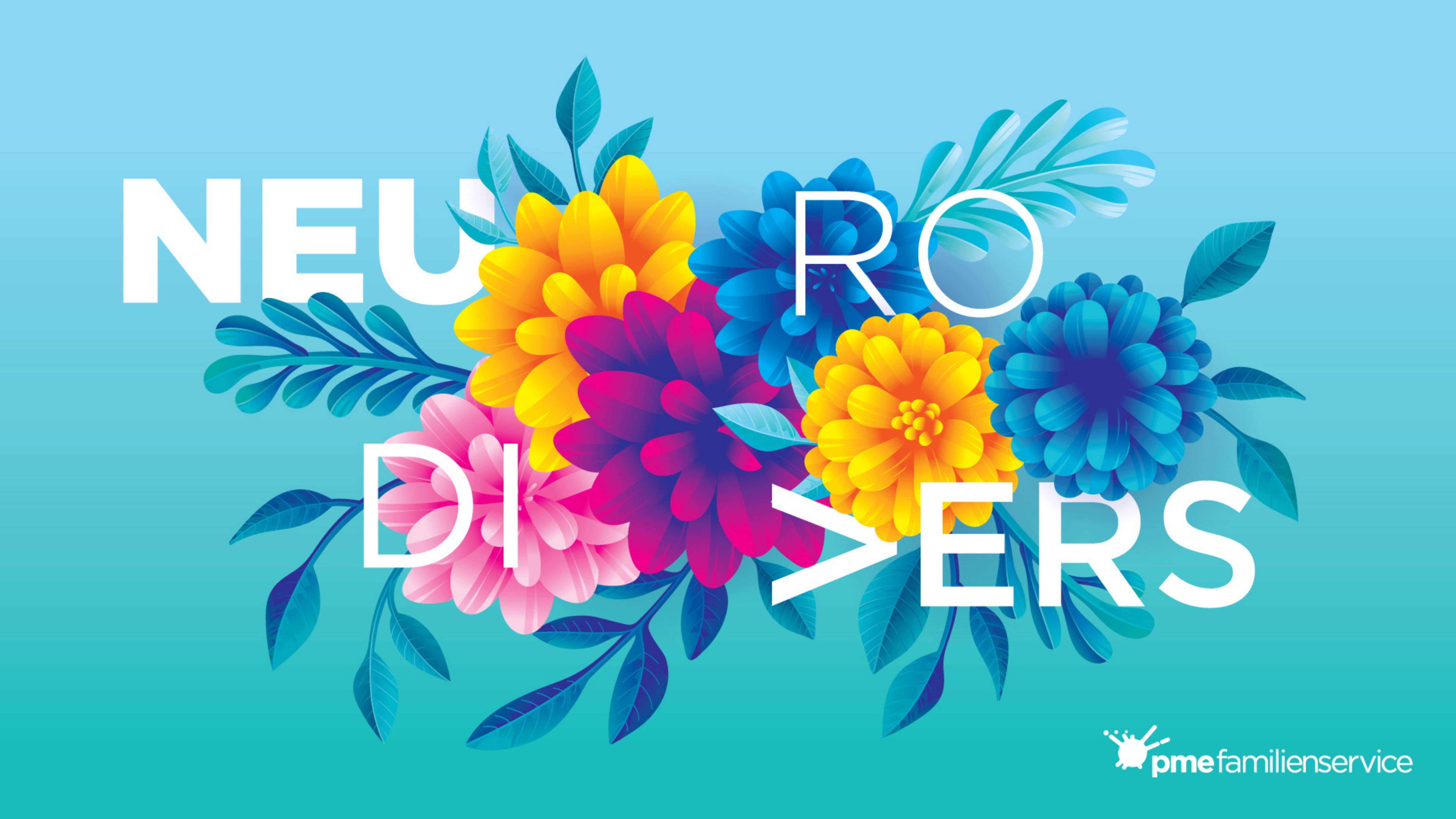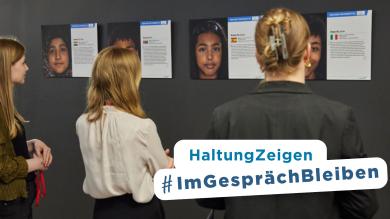
Which working environment supports neurodivergent people?
In a working world that is often designed for a "standard operating system", the talents of people with autism, high sensitivity, ADHD or dyslexia are easily overlooked. However, jobs and application procedures can be designed without great effort in such a way that different ways of thinking are not only tolerated, but specifically encouraged. Small changes often have a big impact for neurodivergent employees and represent a benefit for the entire company.
Read more in this article:
- What do neurodiversity and neurodivergence mean?
- An overview: What forms of neurodivergence are there?
- The "superpowers": What strengths do neurodivergent people bring to the table?
- Typical hurdles: Why the standard workplace often doesn't fit
- Conclusion: A win for everyone
- FAQ: Neurodiversity and the world of work
The article shows how companies can promote the strengths of neurodivergent employees - such as those with ADHD, autism or high sensitivity - and ensure innovation, productivity and better cooperation by making targeted adjustments to the working environment. Practical tips, quotes from experts and examples from the business world make it clear that neurodiversity is an asset to any team.
We all have days when the noise in the office robs us of concentration or a vague instruction causes confusion. For neurodivergent people, however, this is not an occasional annoyance, but a major hurdle on a daily basis. This is because people on the autism spectrum, with ADHD or dyslexia process information differently - not better or worse, but simply differently.
"Neurodivergent people perceive information in their very own way and process it differently - this is a natural diversity that we should take into account in everyday working life," says Carline Krügl, systemic consultant at pme Familienservice. She has been working intensively with ADHD/ADS and the neurodivergent spectrum since her studies and supports companies and those affected in their working lives.
"During my professional career, I became more and more aware of what neurodivergence can be - namely people with giftedness, high sensitivity, autism, ADHD, dyslexia or other neurological characteristics," adds Krügl.
However, our working world is mostly unconsciously designed for neurotypical brains. The unique strengths of neurodivergent talents, such as deep concentration, exceptional creativity or impressive pattern recognition, often remain untapped. Why is this the case? And how can we create a work culture in which everyone can develop their full potential and the entire team benefits?
"While estimates vary by type of neurodiversity, age groups, regions and geographic areas, approximately 10% to 20% of the world's population is considered neurodivergent." Deloitte Insights, A rising tide lifts all boats: Creating a better work environment for all by embracing neurodiversity
1 What do neurodiversity and neurodivergence mean?
First, let's clarify the terms: neurodiversity and neurodivergence . The terms sound similar and are often used interchangeably, but they represent two fundamentally different ideas: Neurodiversity is the concept that describes the overall, natural diversity of human brains in our society - a diversity as valuable as that of a rich ecosystem.
This idea was coined in the late 1990s by sociologist Judy Singer, who wanted to take neurological differences such as autism or ADHD out of the "disease corner" and establish them as a natural variation of being human.
But what do you call a person whose brain deviates from the social norm - i.e. from the neurotypical "standard"? This is where the term neurodivergence comes into play. It was created by the activist Kassiane Asasumasu, herself autistic and a person of color. From her perspective, it was crucial to have a word for those people whose experiences are often overlooked. The term "neurodivergent" should enable them to talk about the individual experiences they have due to their special perception.
A person is therefore neurodivergent (e.g. autistic or with ADHD), while humanity as a whole is neurodiverse. In essence, both women wanted to make it clear: Neurological deviations from the norm are not a deficit, but a different way of perceiving and processing.
"Especially in the work context, neurodivergent people can develop great strengths if special needs are taken into account. Neurodiversity recognizes these differences as valuable and emphasizes the need for inclusion and understanding in everyday life - especially at work." Johannes Junker, INQUA Neurodiversity at work: a guide
"Many business leaders have spoken openly about being neurodivergent, but more engagement is needed in this area. John Chambers, the former CEO of Cisco, says: '25% of CEOs are dyslexic, but many don't want to talk about it'. If leaders came out as neurodivergent, the rest of the workforce would feel comfortable coming out as well."
Deloitte Insights, A rising tide lifts all boats: Creating a better work environment for all by embracing neurodiversity
2 An overview: What forms of neurodivergence are there?
Neurodivergence is a broad term that encompasses a variety of neurological profiles. Here are some of the best known spectra:
Important: This list is not exhaustive, and many neurodivergent people have characteristics from more than one of these spectrums. Neurodivergence itself is a spectrum, and no two people have exactly the same experiences.

3. the "superpowers": What strengths do neurodivergent people bring to the table?
Instead of asking themselves which deficits need to be compensated for, companies can ask themselves a much more exciting question: What unique skills and perspectives do neurodivergent employees bring to a team? Because if the working conditions are adapted, neurodivergence can often turn out to be a "superpower" with enormous added value.
Strengths in the autism spectrum: precision and depth
People on the autism spectrum are often characterized by an intense and detail-oriented way of thinking. This makes them invaluable talents in many areas:
High ability to concentrate (deep work): Where others are thrown off by constant interruptions, many autistic people can immerse themselves deeply in a complex task for hours. This ability to "deep work" is worth its weight in gold in today's working world, especially in the fields of IT, data analysis and research.
Exceptional pattern recognition: Autistic people often have a talent for recognizing patterns, correlations and errors that remain hidden to others. This makes them excellent employees in quality assurance, debugging software or analyzing complex data sets.
Attention to detail and honesty: A high level of conscientiousness and a strong sense of justice often lead to extremely precise work and direct, honest communication. The results of autistic people can be relied upon, and their feedback is clear, transparent and free of office politics.
The superpowers of ADHD: creativity and crisis resilience
The brains of people with ADHD are often on the lookout for new stimuli and think in quick, non-linear jumps. What is still often considered a "disruptive factor" in the school system (in many places, schools also need to learn to rethink and strengthen strengths instead of focusing on weaknesses) becomes a driving force for innovation in the professional environment:
Enormous creativity and inventiveness: people with ADHD are often masters at making unconventional connections between ideas. This makes them born innovators in brainstorming sessions, in marketing or in product development.
Ability to hyperfocus: Even if it can be extremely difficult to concentrate on routine tasks: When a topic sparks their interest, people with ADHD can immerse themselves in a state of extreme concentration, or "hyperfocus". In this phase, they become deeply involved in topics in a very short time and perform outstandingly well.
Talent for improvisation and strength in crises: When plans fail and chaos breaks out, many people with ADHD are at their best. Their ability to think quickly and adapt to new situations makes them valuable crisis managers and problem solvers.
The talents of dyslexia & co.: Holistic thinking and empathy
People with dyslexia or dyscalculia often have difficulties with the linear processing of symbols such as letters or numbers. To compensate for this, their brains often develop remarkable alternative abilities:
Strengths in three-dimensional and conceptual thinking: Many people with dyslexia are exceptionally good at visualizing complex systems spatially. This makes them talented in areas such as architecture, engineering, design or surgery.
Holistic problem solving ("big picture thinking"): Instead of getting lost in the details, they often grasp the big picture and recognize overarching connections. They are the ideal strategists who keep their eye on the goal while others are still analyzing the individual steps.
High empathy and narrative skills: As they cannot rely on the written word alone, many develop a fine antenna for non-verbal signals and the moods of others. They are often excellent storytellers and can convey complex issues in an understandable and engaging way.
The strengths of high sensitivity: empathy and foresight
Highly sensitive people (HSP) perceive sensory stimuli and moods more intensely and process them more deeply. This sensitivity is a particular strength in working life:
High empathy and social sensitivity: Highly sensitive people are often the social conscience of a team. They sense tensions early on, understand the needs of their colleagues and promote harmonious cooperation. Their emotional intelligence is invaluable in management positions and in customer service.
A feel for details and nuances: nothing escapes you. They notice the smallest changes, potential sources of error or subtle opportunities long before others do. This makes them excellent analysts, consultants and quality managers.
Conscientiousness and thoughtful action: Thanks to their in-depth information processing, they often make particularly well-considered and sustainable decisions. Their work is characterized by high quality and responsibility.
"Neurodiverse employees bring unique skills and perspectives to their jobs that are invaluable in a variety of industries. (...) In addition, many neurodiverse individuals demonstrate high adaptability and social intelligence, making them valuable team members in dynamic work environments and professions with intense interpersonal interactions." Johannes Junker, INQUA Neurodiversity at work: a guide
In recent years, some large companies have developed targeted programs to support neurodivergent people and make their potential visible in working life. SAP , for example, has launched the "Autism at Work " program . The aim is to specifically recruit and support people on the autism spectrum and utilize their particular strengths for the company. SAP reports that these employees often have above-average skills in areas such as pattern recognition, attention to detail and analytical thinking.
Microsoft is also setting an example for inclusion with its "Neurodiversity Hiring Program ". The company has adapted the application process to reduce prejudice and take better account of the individual needs of neurodivergent applicants. This includes assessment centers lasting several days, structured interviews and the opportunity to bring along support persons.
The aim is to discover talent that is often overlooked in the traditional recruitment process. Other examples include Ernst & Young (EY) with its "Neurodiversity Centers of Excellence", which specifically recruits and promotes neurodivergent talent. IBM and Dell Technologies have also launched special initiatives to attract, support and retain neurodivergent employees in the long term.
4. typical hurdles: Why the standard workplace often doesn't fit
In order to unleash the potential of neurodivergent employees, companies need to understand why they so often remain hidden. The answer lies in a working environment that - mostly unknowingly - is full of obstacles for neurodivergent people. What is an everyday working environment for neurotypical people can be an obstacle course for others , constantly draining their energy. By recognizing these invisible barriers, they can be broken down and a neuro-inclusive environment can be created for everyone.
"Neurodivergent employees often perceive a multitude of sensory impressions at the same time, which can easily overwhelm them - for example through noise or bright light. It is therefore important to design working environments that are individually adapted," says Carline Krügl, systemic consultant and AD(H)S expert at pme Familienservice.
1. sensory overload: when the office becomes a burden
For many neurodivergent people, the built-in "stimulus filter" works differently. Sounds, lights, smells or constant movement are perceived much more intensely. The noisy open-plan office, the flickering neon lights or the constant ringing of the phone at the next table can lead to massive overload, making concentration impossible and extremely exhausting.
Tips for practice:
Allow and encourage headphones: Noise-canceling headphones are often the simplest and most effective means of reducing acoustic stimuli.
Create quiet zones: Offer retreats or bookable "deep work rooms" where concentrated work is possible without disturbances.
Customize your workplace: Ask about individual needs. Sometimes a place by the window (for natural light) or in a quieter corner of the office can help. The option of working from home is often the best solution.
2. communication: having to read between the lines
Neurotypical communication is often full of irony, innuendo and unwritten social rules. For many neurodivergent people, especially those on the autism spectrum, literal and direct communication is much easier to process. Unclear instructions, sarcasm or the compulsion to make small talk can lead to misunderstandings, stress and social exhaustion.
Tips for practice:
Be clear and direct: formulate instructions and feedback clearly and unambiguously. Instead of "Can you take a look over this?", say: "Please check this document for spelling mistakes by 3 p.m.".
Record important information in writing: A short e-mail or chat message after a conversation ensures that all information has been received correctly.
Structure meetings: A clear agenda and a defined goal help everyone involved to follow the conversation and focus on the essentials.
"An appreciative approach begins with perceiving each person as a unique individual. Unfortunately, we still often encounter clichés and prejudices, but real understanding comes from openness and exchange." Carline Krügl, systemic consultant and AD(H)S expert at pme Familienservice
3. structure and processes: the chaos of constant interruption
While some people cope well with spontaneity, many neurodivergent employees need clear structures and routines in order to be productive. Constant interruptions, short-term changes in priorities and unclear expectations can lead to considerable stress and destroy the ability to concentrate deeply (the "hyperfocus").
Tips for practice:
Make expectations transparent: Clearly define what needs to be done by when and what priority a task has.
Respect focus times: Establish a culture within the team in which focused work phases are respected (e.g. through a blocked calendar or a status in chat).
Create predictability: Use shared project management tools to make tasks and deadlines visible and establish routines.
"Often people with ADHD struggle with structure and scheduling. They wear their heart on their sleeve, which can have advantages and disadvantages, especially for themselves. Regular working hours can be a challenge. Especially in the evening hours, when many go home from work, a person with ADD/ADHD can develop real superpowers and concentrate particularly well." Carline Krügl, systemic consultant and AD(H)S expert at pme Familienservice
4. recruiting: when the job interview becomes the biggest hurdle
The classic job interview is often more of a test of social performance than professional aptitude. The expectation to maintain constant eye contact, sell yourself confidently and interpret social signals perfectly is a massive hurdle for many neurodivergent candidates. Brilliant specialists fall through the cracks because the format cannot reflect their actual skills.
Tips for practice:
Send questions in advance: Give candidates the opportunity to prepare the content. This reduces social anxiety and leads to well thought-out answers.
Test work instead of just talking: Let the applicants solve a small, realistic task. This allows them to demonstrate their professional skills directly in practice.
Conduct structured interviews: Ask all candidates the same, competency-based questions. This makes the process fairer and more objective.
"It is important that neurodivergent employees know their needs and are able to communicate them clearly. This allows individual solutions to be found that make everyday working life easier and unlock potential." Carline Krügl, systemic consultant and AD(H)S expert at pme Familienservice
5. offer mentoring and support
Establish mentoring programs and provide external advice. These offerings strengthen trust and open up new development opportunities for all employees.
"In any case, both employees and managers should be trained. Understanding on both sides should be encouraged. Even neurodivergent people sometimes have no understanding of the views of neurotypical people. An environment that not only tolerates diversity, but actively promotes it, helps to avoid isolation and create a sense of belonging. Neurodivergent people should not be conformed to, but valued for their unique strengths," explains expert Carline Krügl.
Conclusion: A win for everyone
Neurodiversity is much more than a buzzword - it can be a real added value for any company. "It is important to recognize the strengths of neurodivergent people without overlooking their challenges. The road to greater acceptance is often long and requires real commitment," sums up Carline Krügl. "When managers and teams recognize and specifically promote the different strengths and needs of neurodivergent employees, everyone benefits: the working atmosphere becomes more open, communication clearer and collaboration more diverse."
Innovations arise where different ways of thinking and perspectives come together. Measures that make working life easier for neurodivergent people - such as flexible working hours, structured processes and clear, respectful communication - ultimately benefit the entire team. They create an environment in which everyone can develop their potential.
An inclusive, neuro-friendly working environment is therefore not a special case, but an opportunity for more creativity, productivity and satisfaction.
FAQ: Neurodiversity and the world of work
What does neurodiversity mean in the company?
Neurodiversity describes the natural diversity of neurological characteristics and ways of thinking. In the company, it means recognizing and specifically promoting the different strengths and needs of employees with ADHD, autism, high sensitivity or other special characteristics.
How do companies benefit from neurodivergent employees?
Neurodivergent employees bring special skills such as creativity, pattern recognition, empathy and crisis resilience to the team. An inclusive working environment leads to more innovation and greater satisfaction.
What challenges do neurodivergent people face at work?
Typical hurdles include sensory overload, unclear communication, a lack of structure and traditional job interviews. Individual adjustments and open communication help to break down these barriers.
How can managers create an inclusive working environment?
Important measures include flexible working hours, quiet retreats, clear structures, training for teams and the promotion of an appreciative corporate culture.
What tips are there for neurodivergent employees?
Self-reflection, open communication about your own needs, the use of digital tools for organization and the search for a supportive, inclusive employer are helpful.










 (1).png/4c710762-3137-efdf-a95a-1ef231de5907/4c710762-3137-efdf-a95a-1ef231de5907?imageThumbnail=2)
